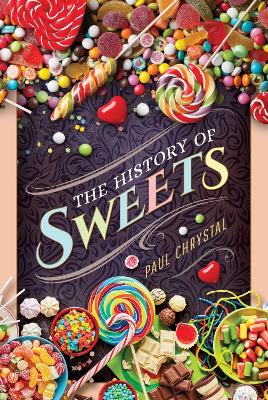Reviewed by annieb123 on
The History of Sweets is an interesting and informative layman accessible look at the confectionery industry especially in the UK written by Paul Chrystal. Due out 31st March, 2021 from Pen & Sword Books, it's 144 pages and will be available in paperback format.
This is an engaging look at the history of sweets and the public's buying (and consumption) habits over the last several centuries. The book is absolutely filled with delightful minutiae such as the fact that according to records from 1851 £10 000 was spent on confectionery in London as opposed to the (to me) staggering sum of £19 448 on boiled eels (yikes) that year. The chapters are arranged roughly thematically and chronologically; the earliest history and timelines of sugar production and manufacture through to the modern era. This is a factual based history and doesn't turn away from a critical examination of sugar cultivation and its ties to slavery. Although it's not an academic text and doesn't contain copious chapter notes, it is well researched and meticulously presented.
Possibly the most attractive feature of the book for me personally was the abundance of rare and antique advertising memorabilia which is included reproduced in full colour facsimile. There are also numerous period photographs of sweet shops, schoolboys queueing to buy from their school's "tuck shop", and more modern confectioners and manufacturers. It's worth noting that the emphasis in this book's scope is for the British Isles (and some historical info about the British Empire's association with the manufacture and shipping of raw materials from colonial producers).
The book includes extensive links and a bibliography for further exploration as well as an index.
Five stars. Beautifully researched, well written, and accessible. I recommend it highly to readers of history, cultural studies, consumer studies, and advertising as well as anyone who loves sweets. There are no recipes or recommendations included in the text. I also enjoyed seeing ads for sweets from my long vanished youth as well as perennial favourites.
Disclosure: I received an ARC at no cost from the author/publisher for review purposes.
Reading updates
- Started reading
- 13 March, 2021: Finished reading
- 13 March, 2021: Reviewed
